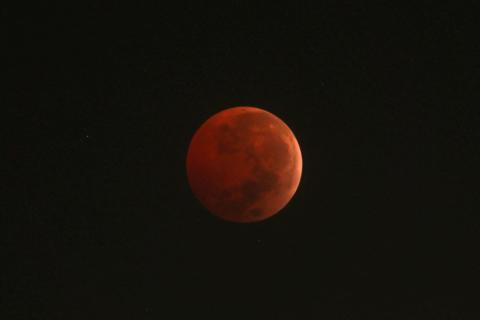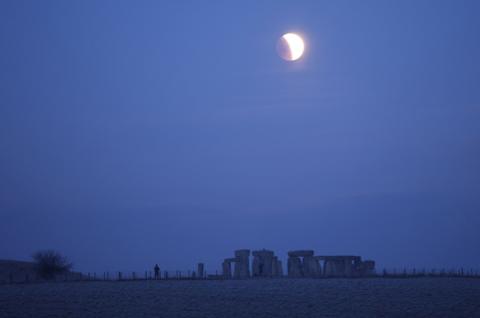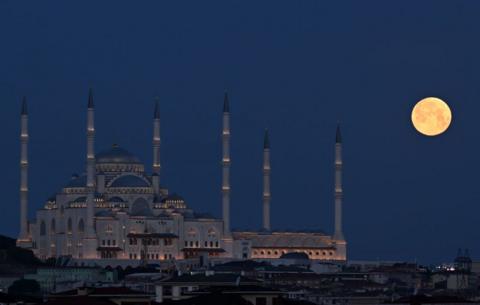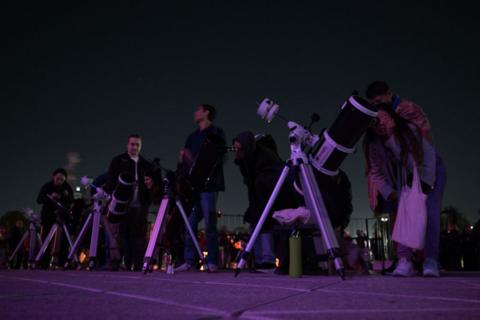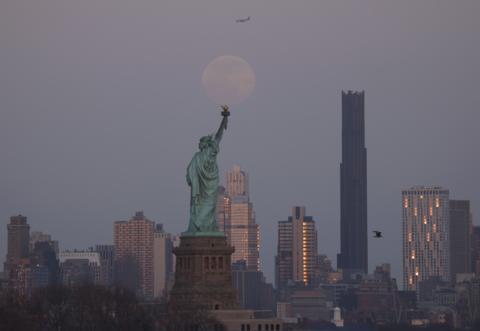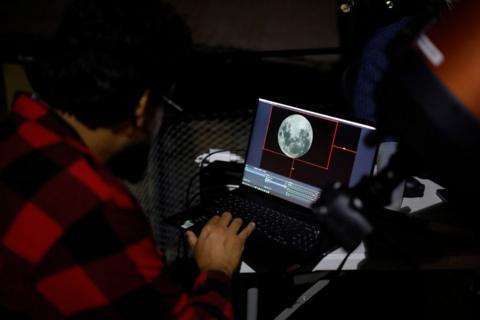People sometimes refer to a lunar eclipse as a "blood Moon" because of the way the Moon can turn a deep, coppery red during the eclipse.
This is caused by a process known as "Rayleigh scattering", which also makes the sky blue and our sunsets red.
When sunlight has to pass through the Earth's atmosphere to reach the Moon, this causes the Moon to appear a different colour, explained astronomer Jake Foster, at the Royal Observatory Greenwich.
When light is deflected by the small particles in Earth's atmosphere, it scatters more of the shorter blue wavelengths, leaving longer red wavelengths to remain visible.
Mr Foster said: "Red light is mostly unaffected by the gases of the atmosphere, so it travels all the way through them and out the other side where it can shine on the Moon, making it appear red."
The next total lunar eclipse is due to take place at the start of September - but will be most prominent over central and east Asia, with only some parts of the UK seeing the total eclipse effect.
